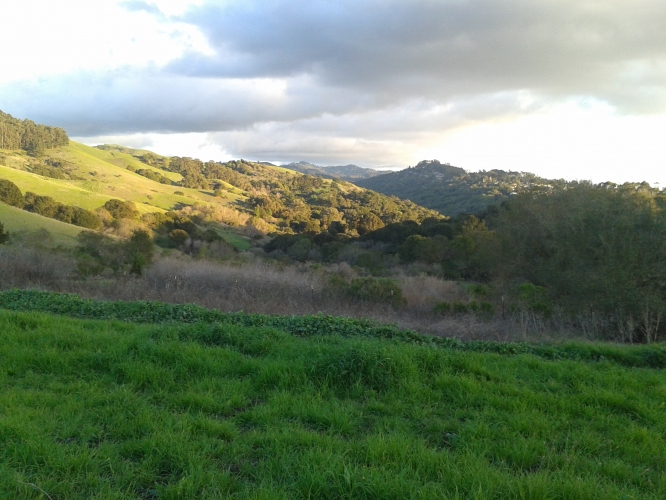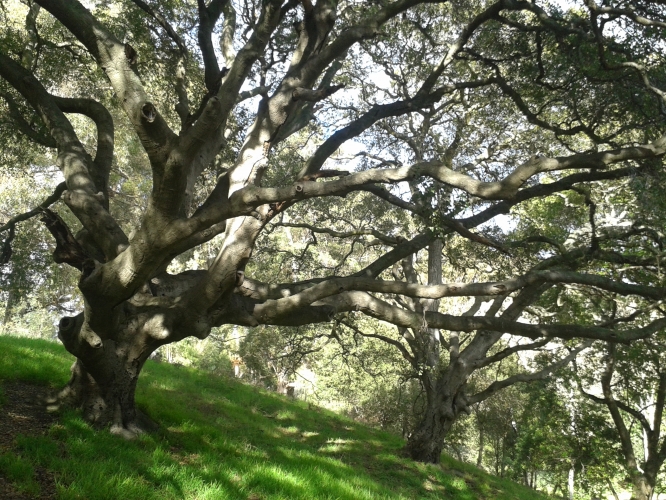From the Open-Publishing Calendar
From the Open-Publishing Newswire
Indybay Feature
A Walk Through Richmond's Prehistoric Native Ohlone Wildcat Canyon Regional Park
The Huchiun thrived for thousands of years in the what today is the greater Wildcat Canyon Regional Park. They had village sites in Alvarado Park at the north end of Wildcat Canyon Regional Park. They had their villages site located along the lower San Pablo and Wildcat Creeks

A WALK THROUGH RICHMOND'S PREHISTORIC NATIVE OHLONE ALVARADO PARK & WILDCAT CANYON REGIONAL PARK- by Mike Raccoon Eyes Kinney
Today's North end of Wildcat Canyon Regional Park located in Richmond, CA. is the homeland of the Huchiun Band of Ohlone Indigenous Natives, whose members spoke the Karkin language. There were some 60 bands of Ohlone Natives in five of the nine San Francisco Bay Area. The Ohlones have been in the greater San Francisco Bay Area for some 10,000 years.
The Huchiun thrived for thousands of years in the what today is the greater Wildcat Canyon Regional Park. They had village sites in Alvarado Park at the north end of Wildcat Canyon Regional Park. They had their villages site located along the lower San Pablo and Wildcat Creeks. They used advanced land management techniques that caused the plant materials and the shellfish they harvested, and other animals they netted, trapped , snared, and variously hunted to occur in larger & healthier populations than if they never used them.
The high hills and canyons were the heartland of the Huchiun band of the Ohlones, Large coast live oaks, bay laurels, and a scattering of bigleaf maples and madrones grow on the park's east-facing slopes. North-facing hillsides support some beautiful, nearly pure stands of bay laurel, fringed with coast live oak. Moist chaparral of coyote brush, poison oak, elderberry, snowberry, bracken fern, and blackberry grow in thickets high on the north-facing slopes.
In the gorge of bedrock-cutting Wildcat Creek grows a riparian forest of alder, willow, creek dogwood, and bay laurel. The forest extends the length of Wildcat Creek and part way up the tributaries. The west- and south-facing canyon slopes are covered with introduced annual grasses (oat, rye, barley, etc.). A few stands of native bunch grasses persist. There are many native wildflower species.
If one looks carefully you can still signs of the Ohlone presence in Wildcat Canyon. There are numerous bedrock mortars where the Ohlones would leech the acorn and buckeye nut harvest. One can find fertility rocks in boulder formations as well, the minerals dug from these boulder formations were made into a fine powder that an Ohlone woman would use to help induce pregnancy. It was said fertility rocks were physical landmarks of where the timelines the past &and the present would merge together.
Today's North end of Wildcat Canyon Regional Park located in Richmond, CA. is the homeland of the Huchiun Band of Ohlone Indigenous Natives, whose members spoke the Karkin language. There were some 60 bands of Ohlone Natives in five of the nine San Francisco Bay Area. The Ohlones have been in the greater San Francisco Bay Area for some 10,000 years.
The Huchiun thrived for thousands of years in the what today is the greater Wildcat Canyon Regional Park. They had village sites in Alvarado Park at the north end of Wildcat Canyon Regional Park. They had their villages site located along the lower San Pablo and Wildcat Creeks. They used advanced land management techniques that caused the plant materials and the shellfish they harvested, and other animals they netted, trapped , snared, and variously hunted to occur in larger & healthier populations than if they never used them.
The high hills and canyons were the heartland of the Huchiun band of the Ohlones, Large coast live oaks, bay laurels, and a scattering of bigleaf maples and madrones grow on the park's east-facing slopes. North-facing hillsides support some beautiful, nearly pure stands of bay laurel, fringed with coast live oak. Moist chaparral of coyote brush, poison oak, elderberry, snowberry, bracken fern, and blackberry grow in thickets high on the north-facing slopes.
In the gorge of bedrock-cutting Wildcat Creek grows a riparian forest of alder, willow, creek dogwood, and bay laurel. The forest extends the length of Wildcat Creek and part way up the tributaries. The west- and south-facing canyon slopes are covered with introduced annual grasses (oat, rye, barley, etc.). A few stands of native bunch grasses persist. There are many native wildflower species.
If one looks carefully you can still signs of the Ohlone presence in Wildcat Canyon. There are numerous bedrock mortars where the Ohlones would leech the acorn and buckeye nut harvest. One can find fertility rocks in boulder formations as well, the minerals dug from these boulder formations were made into a fine powder that an Ohlone woman would use to help induce pregnancy. It was said fertility rocks were physical landmarks of where the timelines the past &and the present would merge together.
Add Your Comments
Latest Comments
Listed below are the latest comments about this post.
These comments are submitted anonymously by website visitors.
TITLE
AUTHOR
DATE
Thanks for trip to Ohlone History in Wildcat Canyon
Tue, Mar 6, 2018 11:26AM
We are 100% volunteer and depend on your participation to sustain our efforts!
Get Involved
If you'd like to help with maintaining or developing the website, contact us.
Publish
Publish your stories and upcoming events on Indybay.
Topics
More
Search Indybay's Archives
Advanced Search
►
▼
IMC Network







